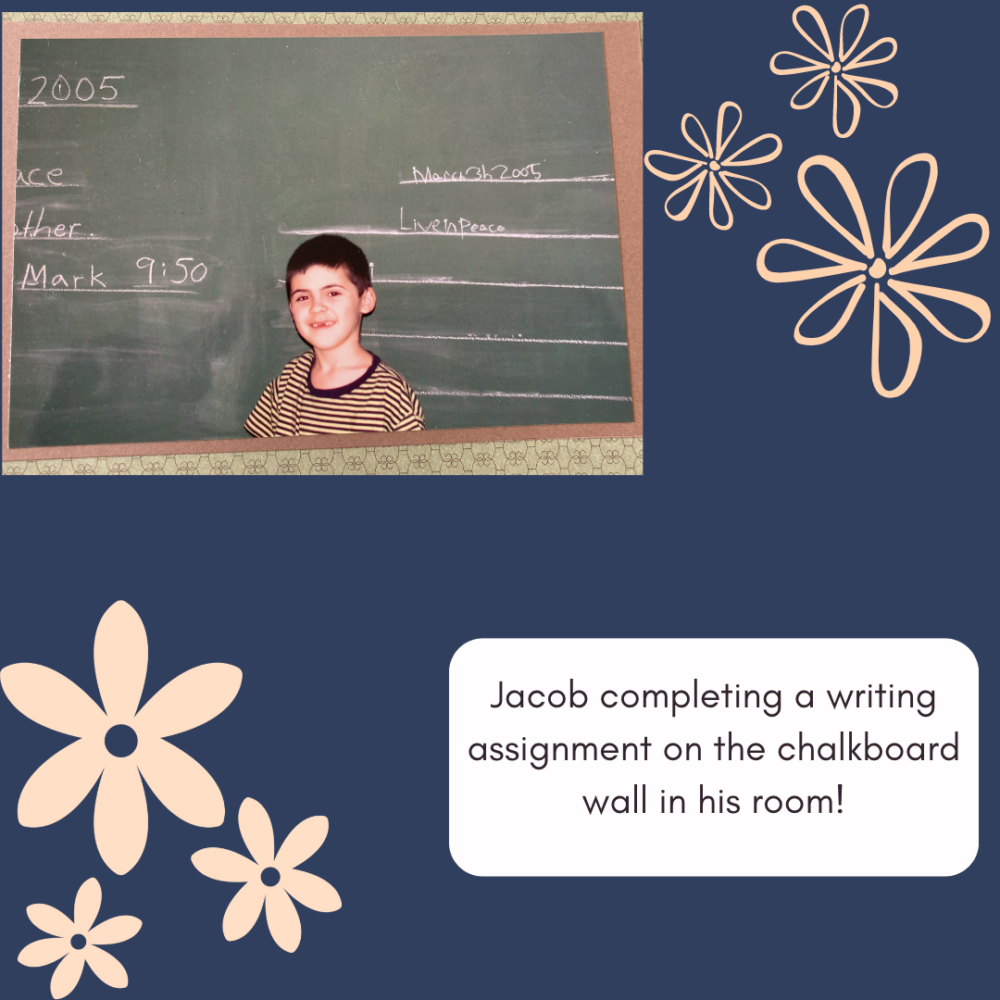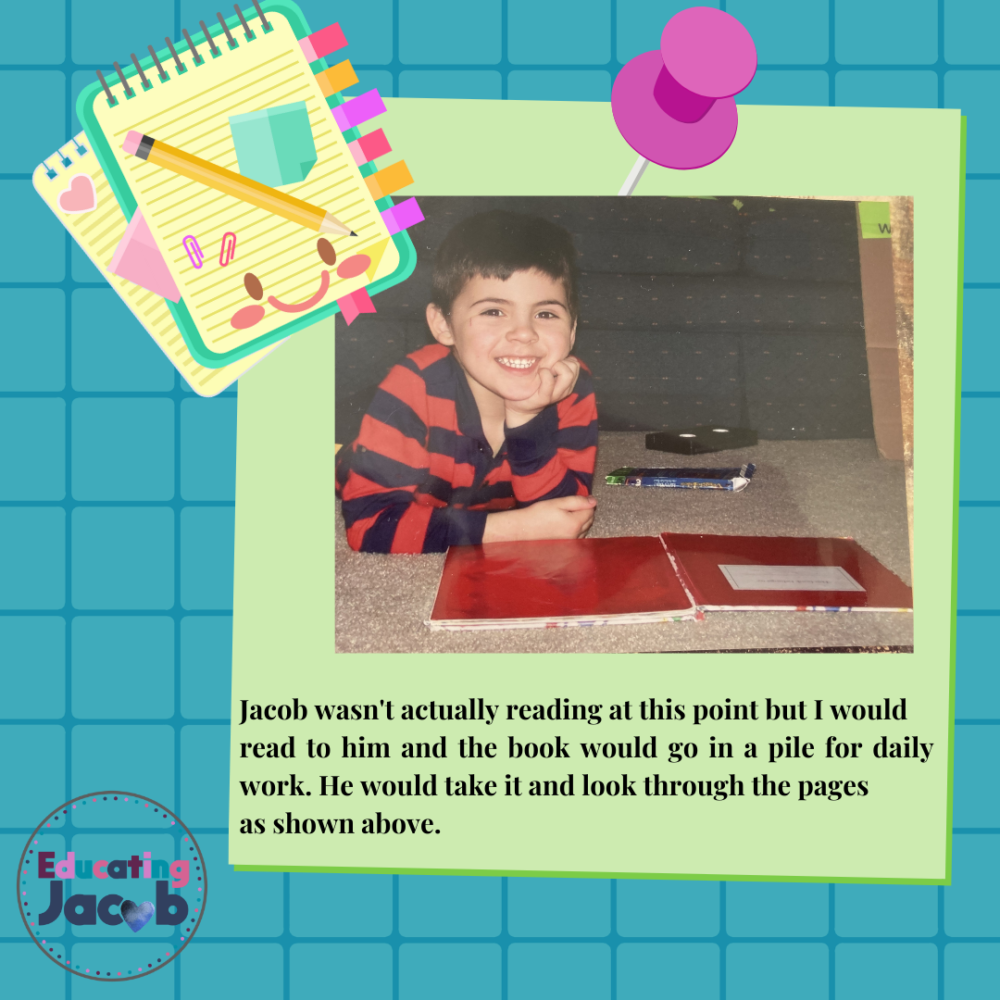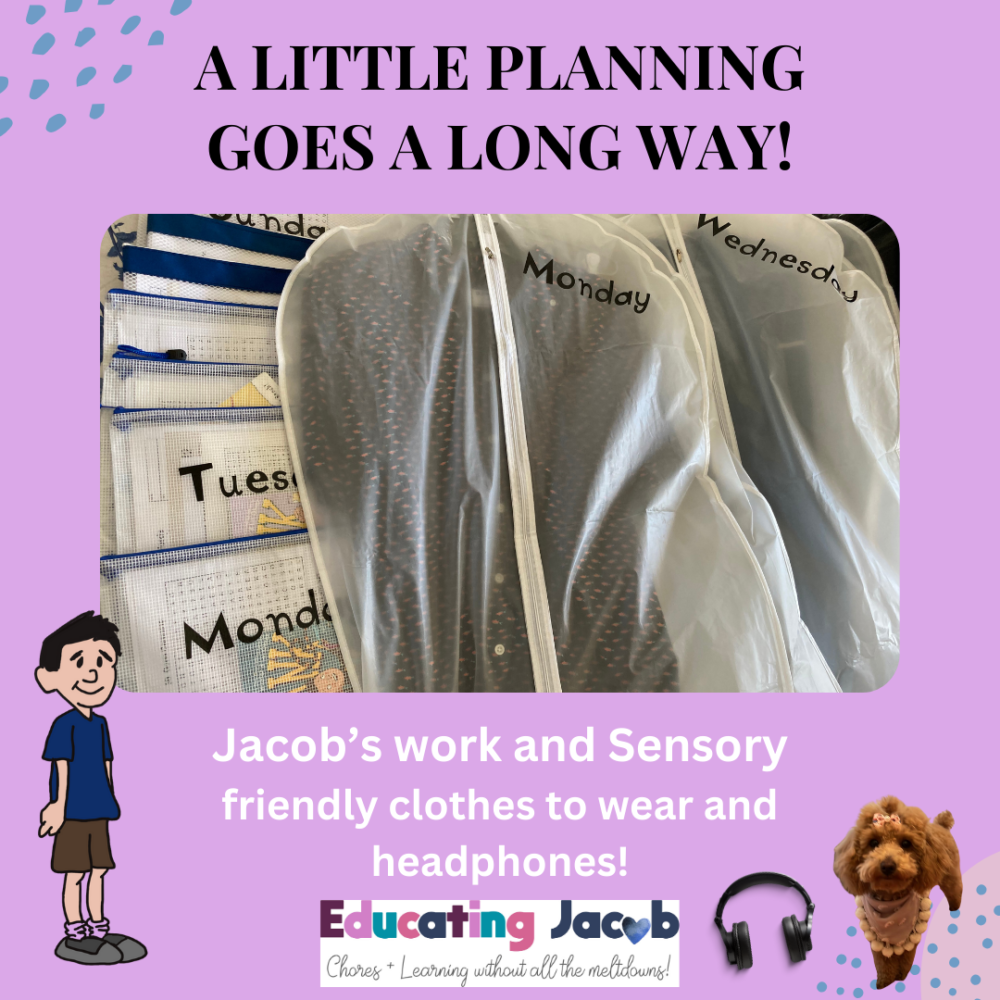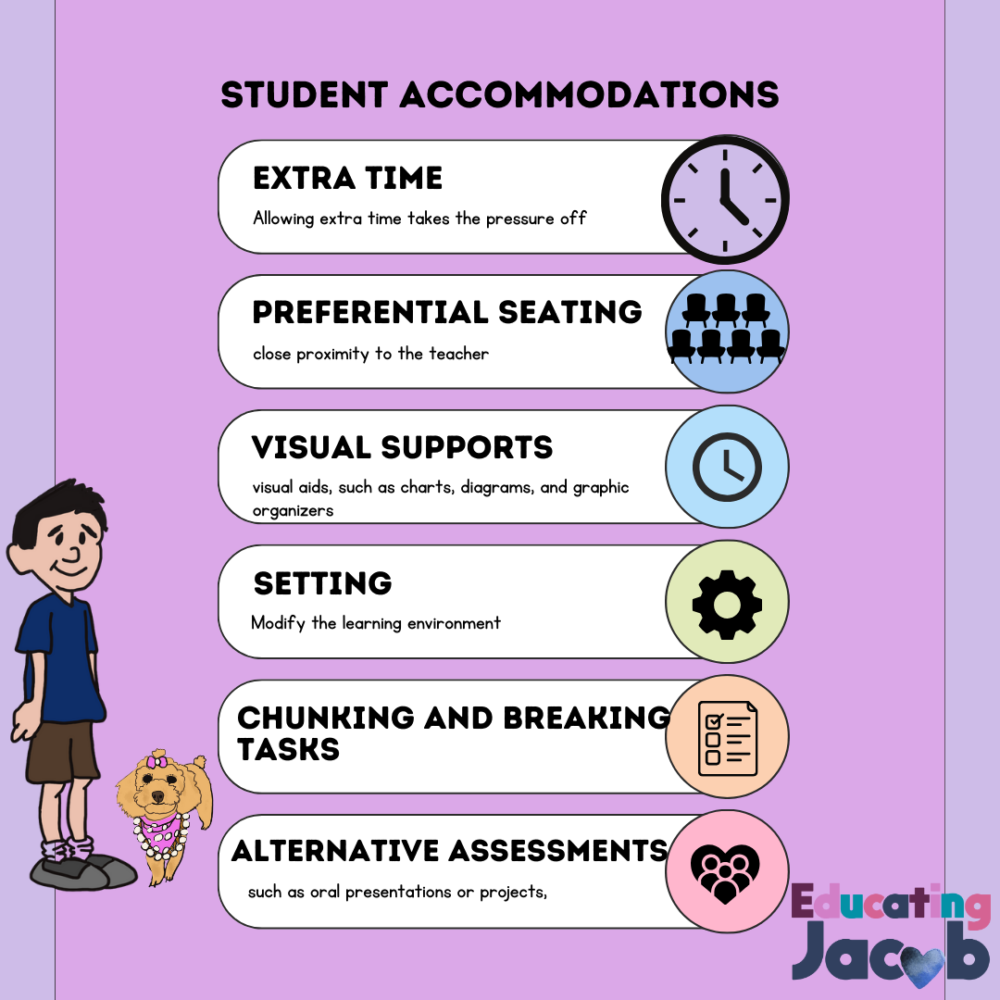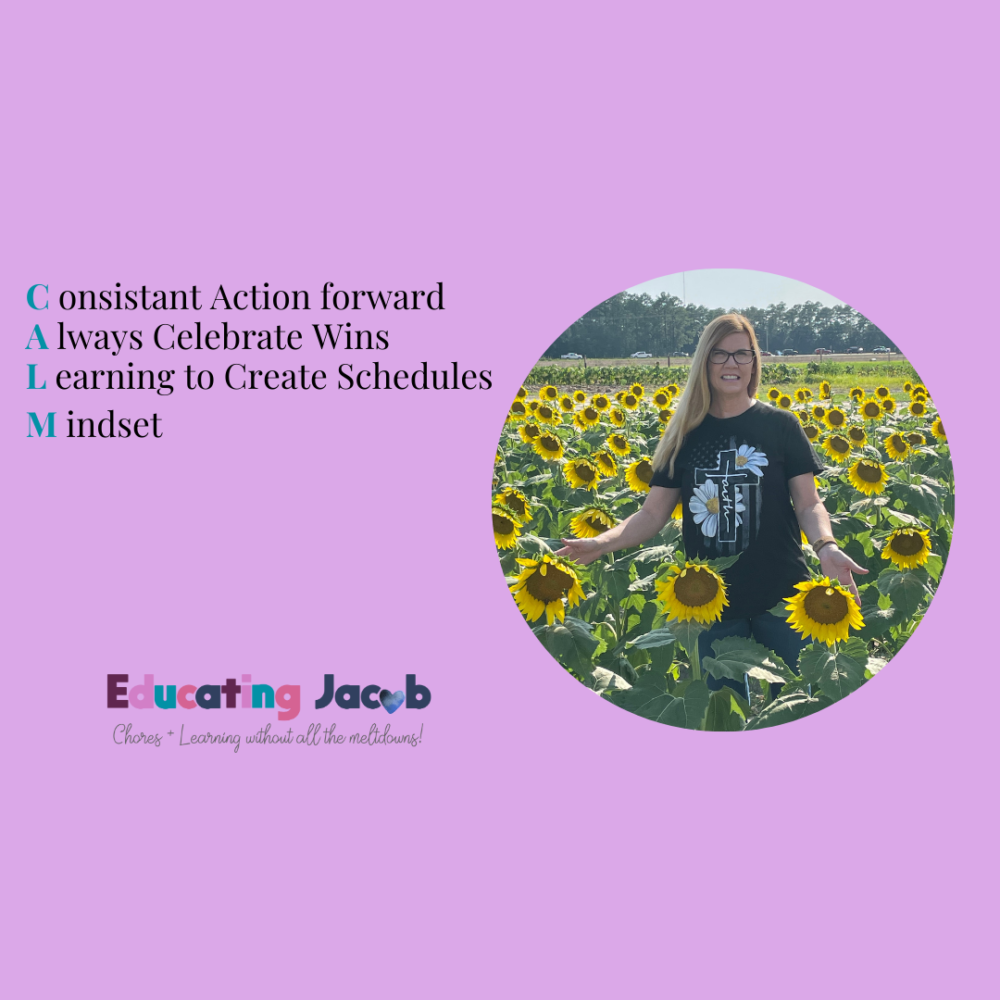Teaching Chores: Building Life Skills with Patience and Support for Autism
Building Life Skills with Patience 🎉
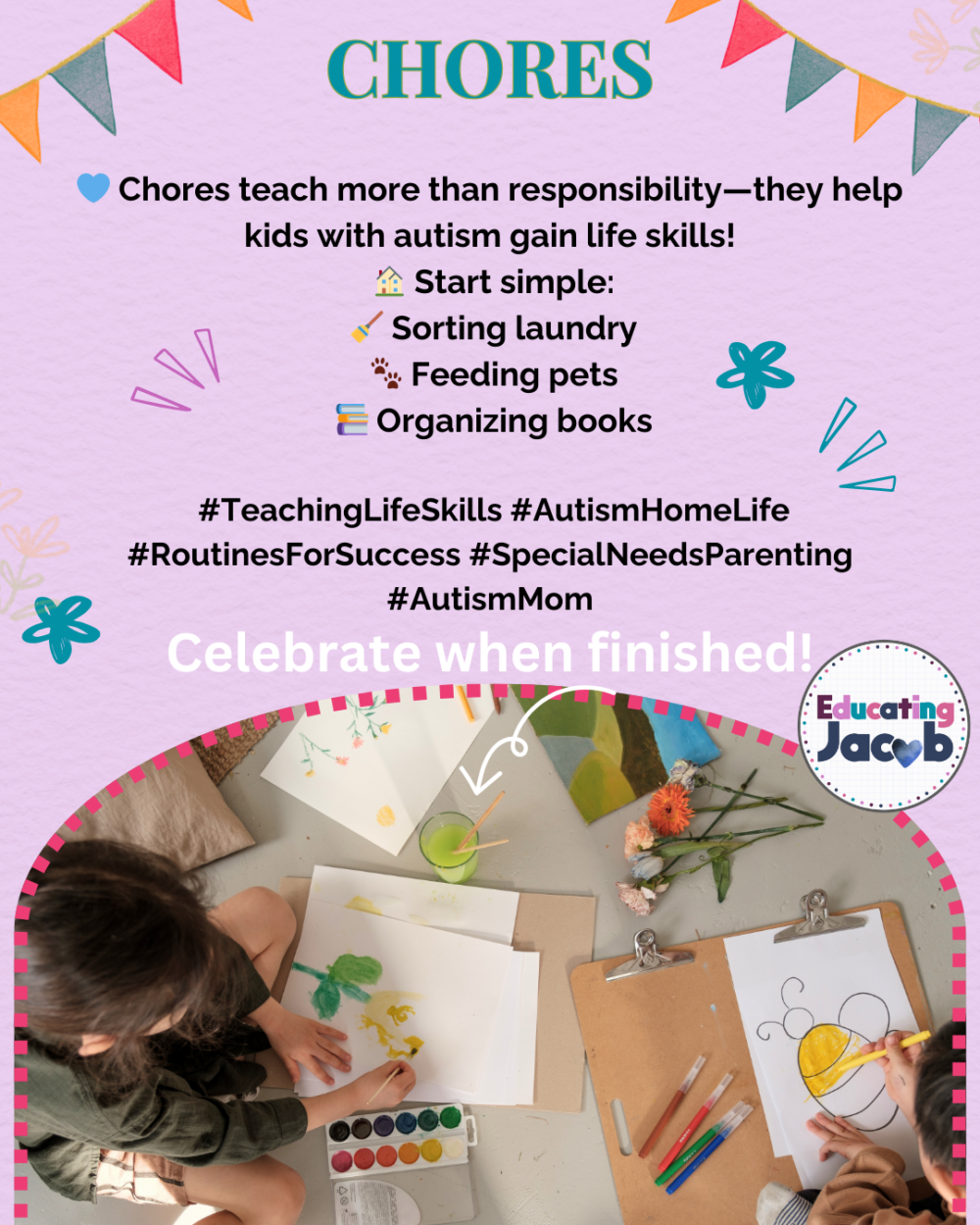
This post is about support and resources for autism families. As parents, we want to raise responsible and independent children who can care for themselves and contribute to their households. This goal applies to all children, including those with autism or learning disabilities. Teaching chores isn’t just about helping out—it’s about building life skills, boosting confidence, and fostering independence. 💙
When my son Jacob was younger, even simple tasks felt overwhelming. At first, he resisted, and honestly, I did too. I wasn’t sure how to teach him without frustration. But through patience, consistency, and visual schedules, he learned step by step. Now, at 27, Jacob can manage many daily tasks independently, and I’m here to share what I’ve learned so your child can too!
Understanding Your Child’s Abilities and Challenges 🧩
Before diving into chores, it’s important to assess your child’s abilities and challenges. So we have to support and have resources for autism families and share with each other! Every child on the autism spectrum has unique strengths and struggles, whether in: ✅ Fine motor skills (e.g., difficulty folding laundry) ✅ Attention span (e.g., easily distracted during tasks) ✅ Sensory sensitivities (e.g., textures of cleaning cloths feeling uncomfortable)
📌 Tip: Start with tasks that align with their strengths! For Jacob, organizing books by color was easier than folding clothes, so that’s where we began. He does well hanging up clothes but not folding.
Choosing Autism-Friendly Chores 🏠
Not all chores are created equal—especially when considering sensory needs and executive functioning challenges. Here are some beginner-friendly chores for children with autism:
🧹 Sorting & Organizing:
- Putting books or toys in bins 🏗️
- Sorting laundry by color 👕
- Arranging groceries on shelves 🛒
🧼 Cleaning Tasks:
- Wiping tables with a damp cloth 🌟
- Sweeping or using a handheld vacuum 🧹
- Spraying plants with water 💦
🧺 Personal Responsibility:
- Putting dirty clothes in a hamper 🏗️
- Helping set the table 🍽️
- Feeding pets 🐾
📌 Tip: Start with ONE simple task and make it part of their daily routine before adding more.
Breaking Tasks into Small Steps ✂️
Children with autism thrive on clear, step-by-step instructions. Instead of saying, “Clean your room,” try breaking it into manageable steps: 1️⃣ Pick up all the toys. 🧸 2️⃣ Put dirty clothes in the laundry basket. 👕 3️⃣ Wipe the table with a cloth. 🧼 4️⃣ Put books on the shelf. 📚
📌 Tip: Use visual schedules to help your child see each step in order. We used pictures of Jacob doing each task, and it transformed how he followed through!
Using Visual Aids and Schedules 🖼️
Visual schedules and checklists are game-changers when teaching chores! They provide predictability and help reduce frustration.
✅ Picture checklists with step-by-step images 🎨 ✅ Magnet boards where kids move tasks from “To Do” to “Done” ✔️ ✅ Timers to set expectations for how long a task should take ⏳
For Jacob, we started with a simple, laminated chart that he could check off after each task. Over time, he became more independent! Stop Morning Chaos: How to start using Visual Schedule for Autism and CALM
Tailoring Instructions & Communication 🗣️
When giving instructions, use clear, simple language that matches your child’s comprehension level. Try: ❌ “Go clean the kitchen.” (Too vague) ✅ “Please put the dishes in the sink.” (Clear & specific)
📌 Tip: If verbal instructions don’t work well, use modeling—show them how to do it first, then let them copy you! 👫 Better yet, use a visual schedule! No words needed just pictures or just one- two words written for something they already know how to do!
Providing Positive Reinforcement 🎉
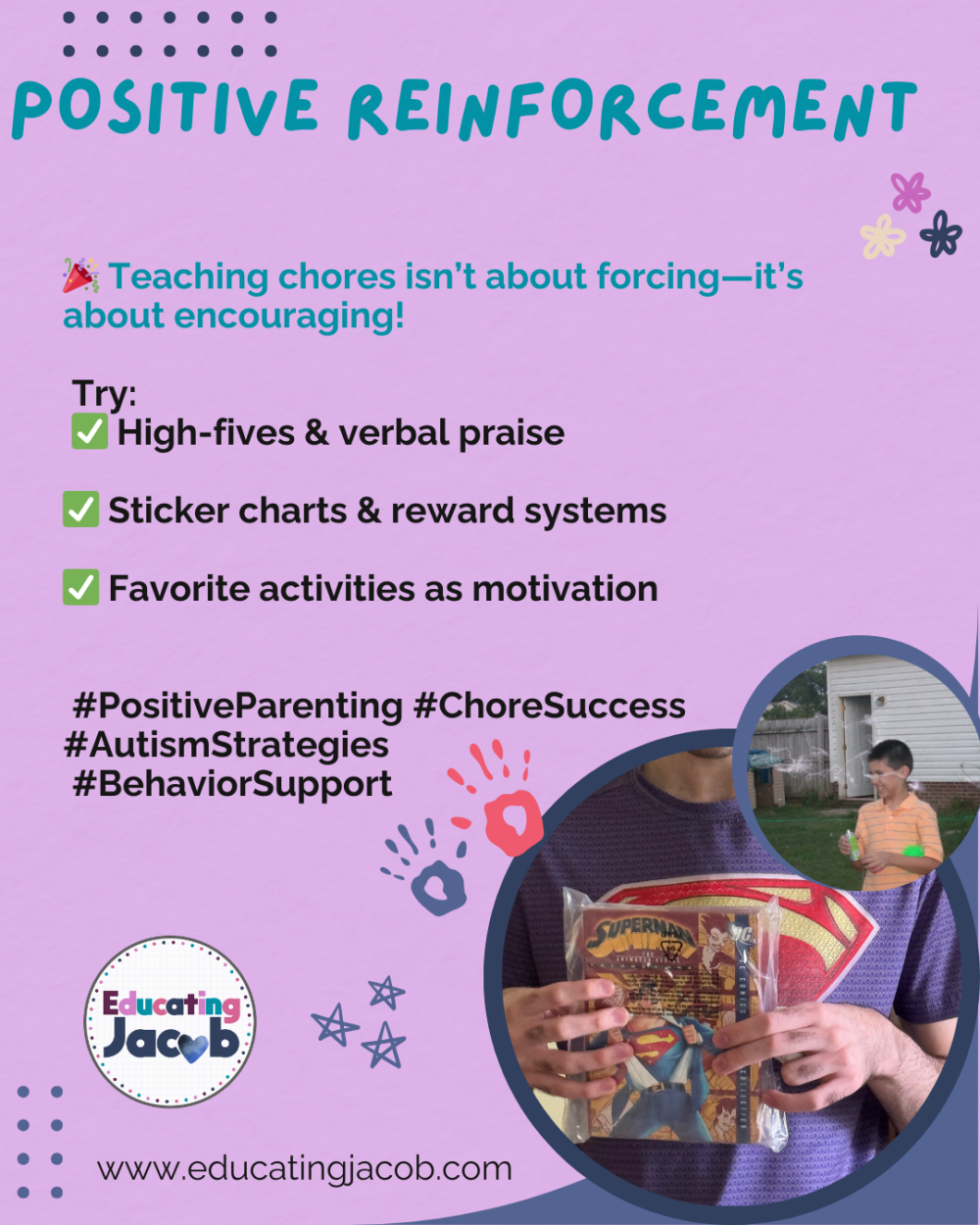
Encouragement goes a long way! Use positive reinforcement to motivate your child:
🎊 Verbal praise – “Great job putting your books away!” 🎊 Token system – Earn stickers or stars for completing chores ⭐ 🎊 Preferred activities – Extra time with their favorite activity 🎮
Jacob loves earning a small reward at the end of the week, like choosing a favorite snack or movie. Over time, chores became part of his routine—not just something for a reward! 💙
Creating a Sensory-Friendly Chore Environment 🌿
Sensory sensitivities can make or break a child’s success with chores. Adapt their environment by: ✅ Using soft gloves if they dislike certain textures 🧤 ✅ Offering noise-canceling headphones for loud vacuuming 🎧 ✅ Choosing unscented cleaners for smell sensitivities 🌿
📌 Tip: Always observe and adjust chores to make them comfortable yet achievable! Help! 3 Ways a schedule can help sensory issues and communication barriers? #Autism Challenges🧩
Knowing When to Seek Support 🤝
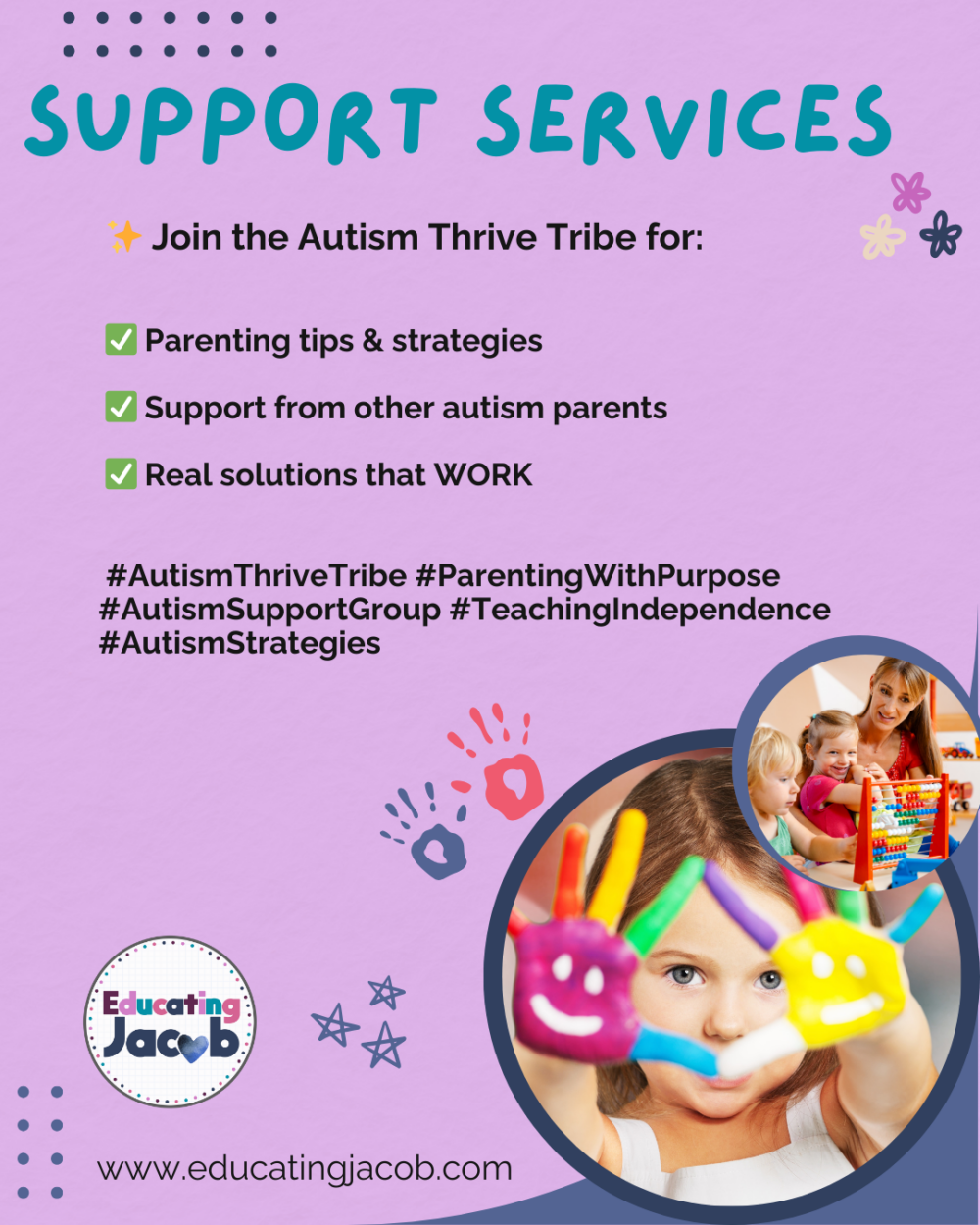
If certain chores feel impossible, it’s okay to seek help from: 👩🏫 Teachers & Therapists – Occupational therapists can suggest fine motor skill-friendly tasks 👨⚕️ Behavioral Therapists – They can help break tasks into manageable steps 👥 Parent Support Groups – Learn what works for other families! Other parents on the same journey (Autism Thrive Tribe at the end!)
Jacob struggled with using utensils and buttons, so we worked with an OT to improve his fine motor skills. That small intervention made daily tasks easier! 🛠️
Final Thoughts: Teaching Life Skills with Love 💙
Teaching chores to a child with autism isn’t just about keeping the house tidy—it’s about building their confidence, independence, and ability to contribute. 🌟 We need support and resources for autism families, lets share what we learn.
By using visual schedules, breaking tasks into steps, adapting for sensory needs, and celebrating small wins, you can create a supportive learning environment. And most importantly, remember progress over perfection! 💙
P.S. 🔥 Want more strategies like this? 📢 Join the Autism Thrive Tribe and connect with other parents learning how to create a structured, peaceful home. [📢 Join the Autism Thrive Tribe]
With patience and the right approach, your child CAN learn new skills—and thrive! 🚀
P.S.S. If you’re seeking disability advice, you should primarily contact the Social Security Administration (SSA) to understand your eligibility for Social Security Disability Insurance (SSDI) or Supplemental Security Income (SSI) benefits based on your medical condition, work history, and income level; you can apply online or at a local SSA office, and should gather comprehensive medical documentation to support your claim.
Outreach Director sent this brochure to me for you to check out if you need additional help outside of the normal route: https://disabilityadvice.org/child-disability/

